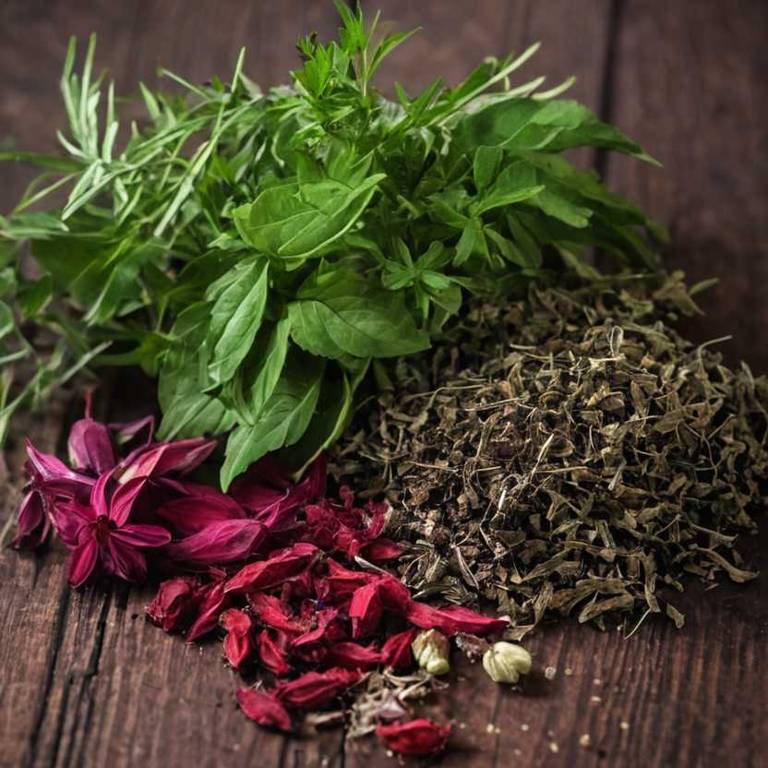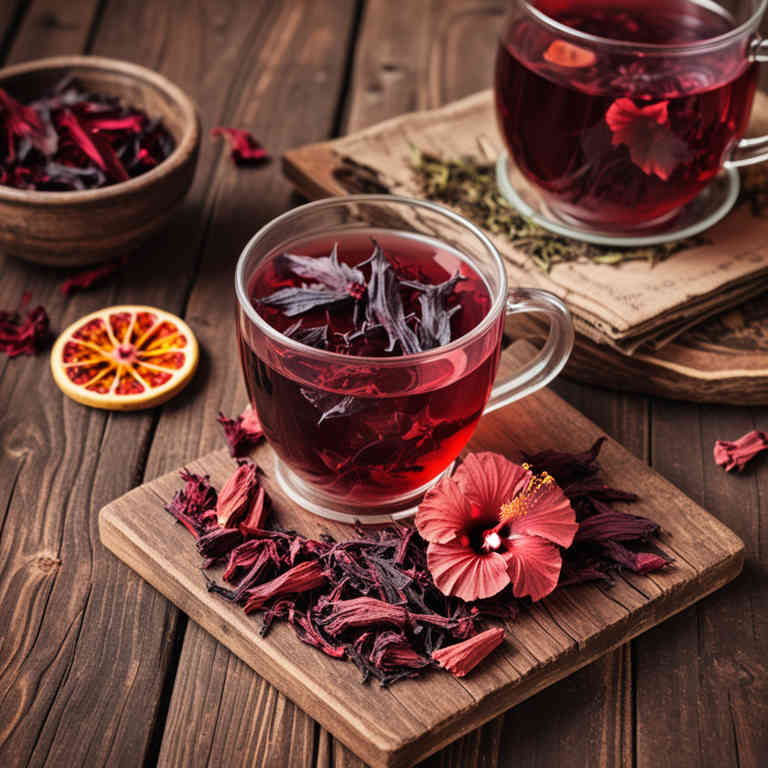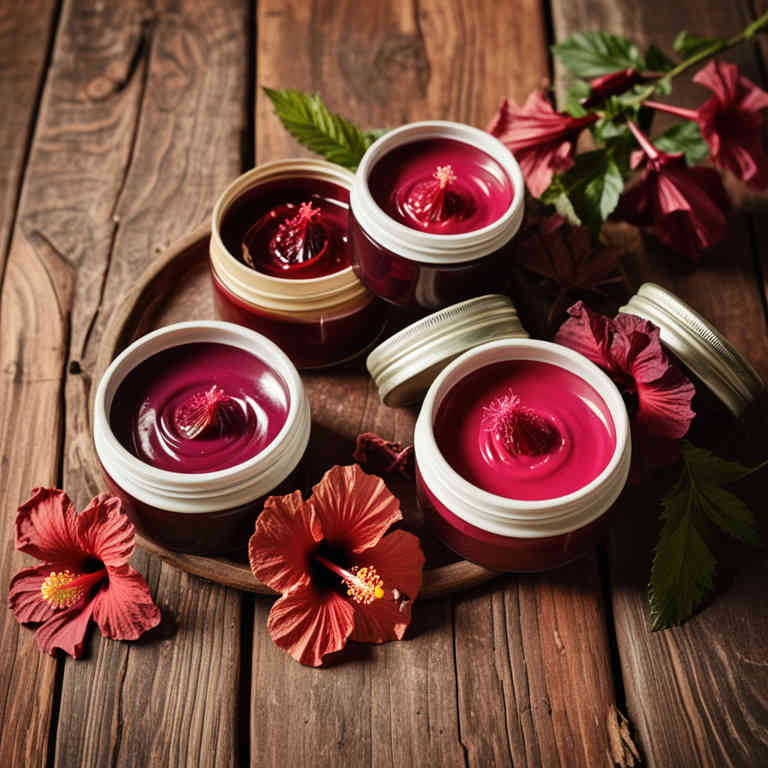10 Best Hibiscus Sabdariffa Preparations

The best medicinal preparations of Hibiscus sabdariffa are teas, decoctions, juices, mucillages, and tinctures, each offering unique benefits for health.
Hibiscus tea, made from dried calyces, is commonly used to support cardiovascular health and reduce stress.
Decoctions involve simmering the herb to extract its active compounds, enhancing its diuretic and anti-inflammatory properties.
Mucillages, derived from the plant's gel-like substance, are used to soothe digestive issues and promote gut health.
Tinctures provide a concentrated form of the herb, often used for their antioxidant and immune-boosting effects.
Below there's a list of the 10 best herbal preparations of hibiscus sabdariffa for medicinal purposes.
- 1. Teas
- 2. Decoctions
- 3. Juices
- 4. Mucillages
- 5. Tinctures
- 6. Syrups
- 7. Capsules
- 8. Creams
- 9. Lozenges
- 10. Oinments
1. Teas
Hibiscus sabdariffa teas is commonly used to support cardiovascular health, reduce stress, and aid in weight management.
This herbal preparation is frequently employed to treat hypertension, anxiety, and digestive issues such as indigestion and bloating. The bioactive constituents responsible for its medicinal properties include anthocyanins, flavonoids, and phenolic acids, which possess antioxidant, anti-inflammatory, and hypotensive effects. Additionally, the tea may help lower cholesterol levels and improve overall metabolic function.
Its traditional use spans various cultures, where it has been valued for both its therapeutic and refreshing qualities.

2. Decoctions
Hibiscus sabdariffa decoctions is commonly used to treat hypertension, inflammation, and digestive issues.
This herbal preparation is widely utilized in traditional medicine for its ability to lower blood pressure and improve cardiovascular health. It is also used to alleviate symptoms of diabetes, liver disease, and gastrointestinal disorders. The bioactive constituents responsible for its medicinal properties include anthocyanins, flavonoids, phenolic acids, and polysaccharides.
These compounds exhibit antioxidant, anti-inflammatory, and hypoglycemic effects, contributing to the plant's therapeutic value.

3. Juices
Hibiscus sabdariffa juices is commonly used to treat hypertension, diabetes, and digestive issues due to its rich bioactive compounds.
The most common medicinal uses include lowering blood pressure, improving insulin sensitivity, and aiding in digestion. It is also used to alleviate symptoms of urinary tract infections and as a natural remedy for weight management. The bioactive constituents responsible for these effects include flavonoids, anthocyanins, polyphenols, and organic acids such as citric and malic acid.
These compounds contribute to its antioxidant, anti-inflammatory, and hypoglycemic properties.

4. Mucillages
Hibiscus sabdariffa mucillages is commonly used to treat ailments related to digestion, inflammation, and cardiovascular health.
It is widely utilized for its soothing effects on the gastrointestinal tract, helping to alleviate symptoms of indigestion, ulcers, and diarrhea. The mucillages are also used to manage high blood pressure due to their diuretic and antioxidant properties. Common bioactive constituents include polysaccharides, flavonoids, phenolic acids, and anthocyanins, which contribute to its anti-inflammatory, antimicrobial, and hypoglycemic effects.
These compounds work synergistically to support overall health and wellness.

5. Tinctures
Hibiscus sabdariffa tinctures is commonly used to support cardiovascular health, manage hypertension, and alleviate symptoms of anxiety and stress.
These tinctures are also used to treat digestive issues such as indigestion and bloating, as well as to reduce inflammation and support urinary tract health. The most common medicinal uses include lowering blood pressure, improving circulation, and promoting diuretic effects. The bioactive constituents responsible for these properties include flavonoids, anthocyanins, polyphenols, and organic acids such as hibiscus acid and quinic acid.
These compounds contribute to the plant's antioxidant, anti-inflammatory, and vasodilatory effects.

6. Syrups
Hibiscus sabdariffa syrups is commonly used to support cardiovascular health, reduce blood pressure, and aid in weight management.
These syrups are also used to alleviate symptoms of colds, sore throats, and digestive issues such as indigestion and constipation. The most common medicinal uses include treating hypertension, respiratory infections, and gastrointestinal disorders. The bioactive constituents responsible for these effects include flavonoids, anthocyanins, organic acids, and polysaccharides, which contribute to antioxidant, anti-inflammatory, and diuretic properties.
These compounds work synergistically to provide the herbal preparation’s therapeutic benefits.

7. Capsules
Hibiscus sabdariffa capsules is commonly used to support cardiovascular health, manage hypertension, and promote digestive wellness.
These capsules are widely utilized for treating ailments such as high blood pressure, high cholesterol, and digestive issues like constipation. The bioactive constituents responsible for these medicinal properties include flavonoids, anthocyanins, polysaccharides, and organic acids, which contribute to anti-inflammatory, antioxidant, and diuretic effects. Additionally, the plant's high vitamin C content supports immune function and skin health.
Hibiscus sabdariffa capsules are also believed to aid in weight management and may help reduce symptoms of stress and anxiety.

8. Creams
Hibiscus sabdariffa creams is commonly used to treat skin conditions and provide anti-inflammatory benefits.
These creams are often applied topically to address issues such as eczema, psoriasis, and minor burns due to their soothing and healing properties. The most common medicinal uses of this herbal preparation include reducing inflammation, alleviating skin irritation, and promoting wound healing. The bioactive constituents responsible for these effects include flavonoids, polyphenols, and mucilage, which possess antioxidant, anti-inflammatory, and skin-protective properties.
These compounds work synergistically to enhance the therapeutic value of the cream in various dermatological applications.

9. Lozenges
Hibiscus sabdariffa lozenges is commonly used to treat sore throats, coughs, and other respiratory ailments due to their anti-inflammatory and antimicrobial properties.
These lozenges are also used to alleviate symptoms of colds and flu, and in some traditional medicine systems, they are believed to help with digestive issues and hypertension. The most common medicinal uses include soothing throat irritation, reducing inflammation, and supporting immune function. The bioactive constituents responsible for these effects include flavonoids, anthocyanins, polyphenols, and mucilage, which contribute to its anti-inflammatory, antioxidant, and antimicrobial properties.
These compounds work together to provide the therapeutic benefits associated with Hibiscus sabdariffa lozenges.

10. Oinments
Hibiscus sabdariffa oinments is commonly used to treat skin conditions and inflammatory disorders.
These preparations are often applied topically to alleviate symptoms of eczema, psoriasis, and minor burns. The most common medicinal uses include reducing inflammation, soothing irritated skin, and promoting wound healing. The bioactive constituents responsible for these effects include flavonoids, tannins, and anthocyanins, which possess anti-inflammatory, antioxidant, and antimicrobial properties.
These compounds work synergistically to enhance the therapeutic benefits of the ointment.
